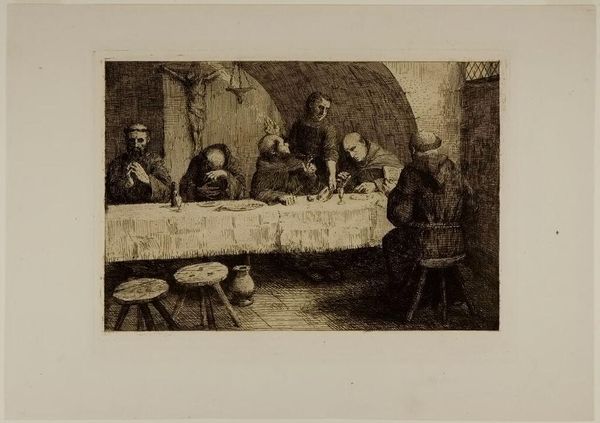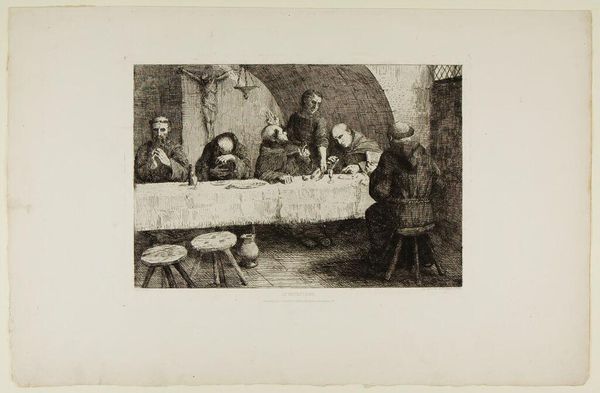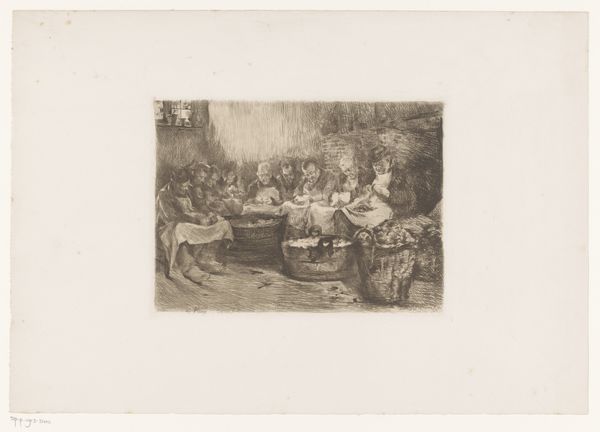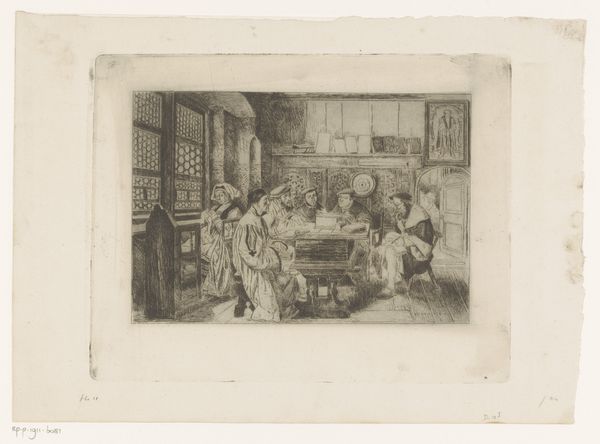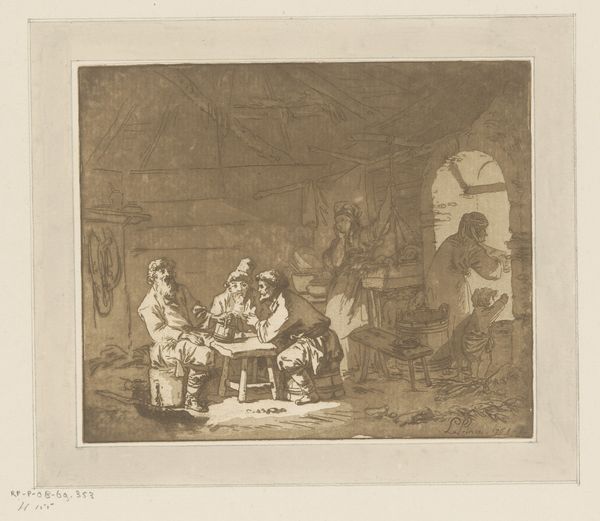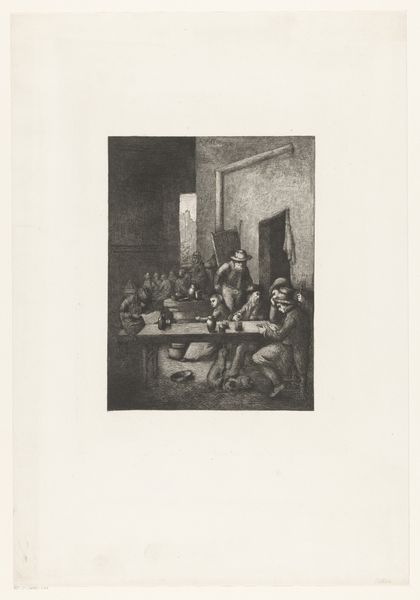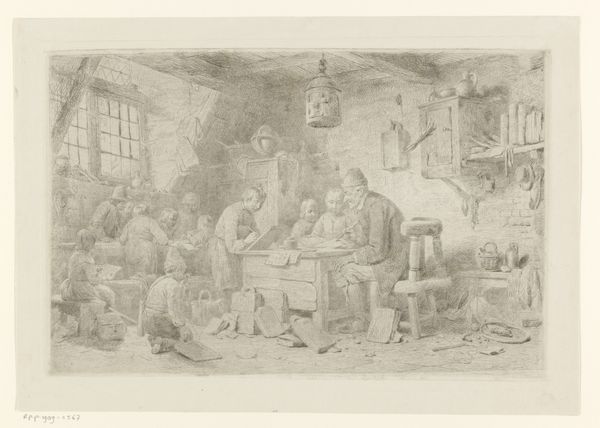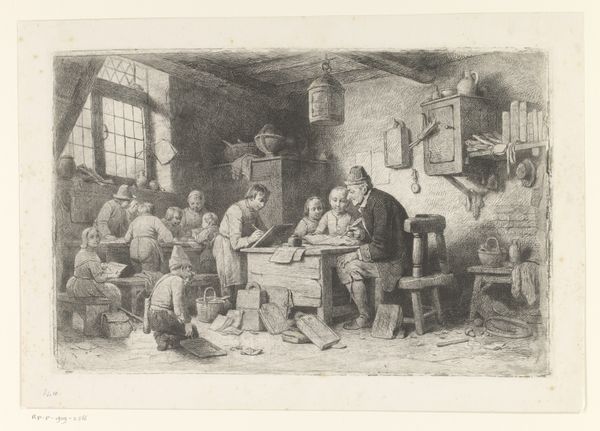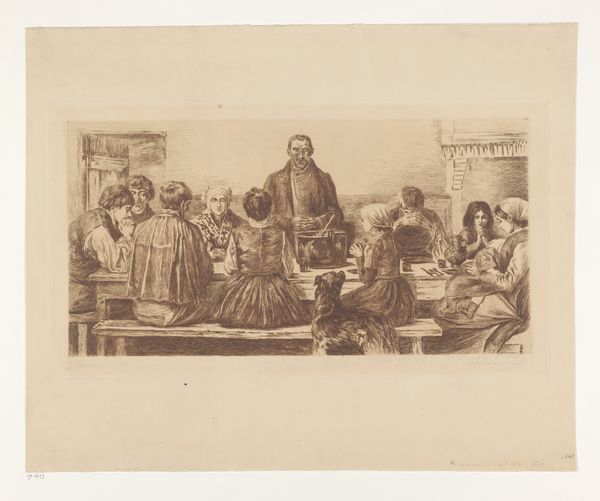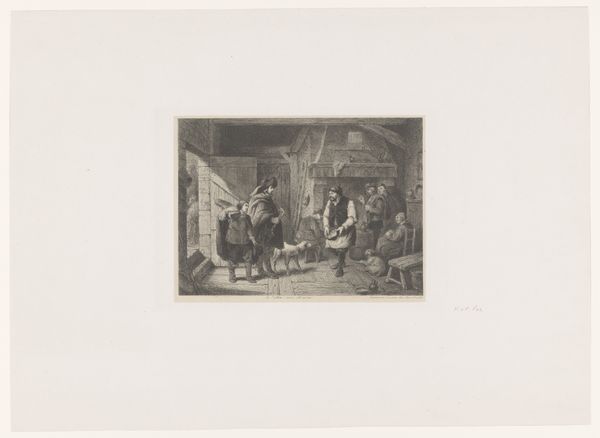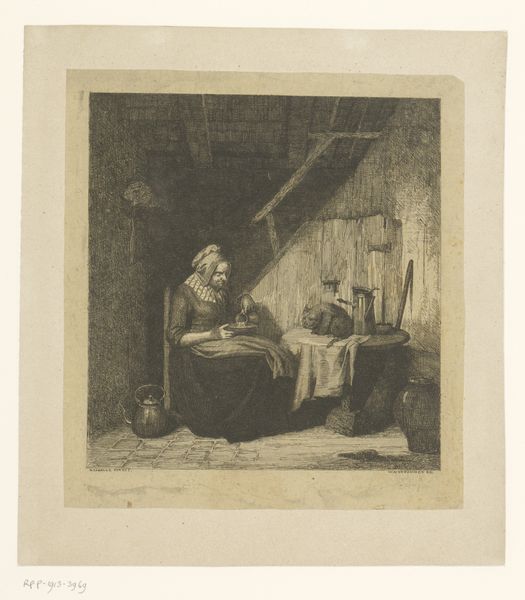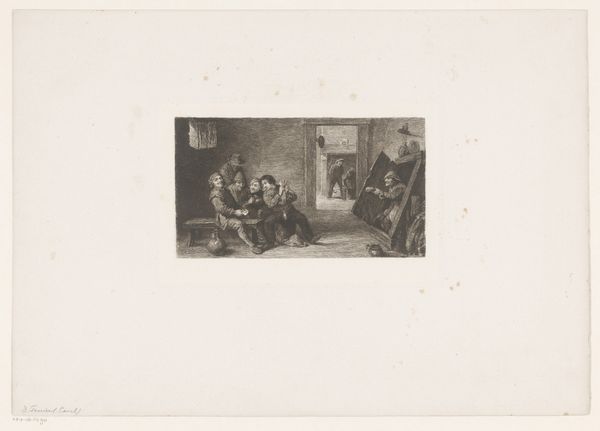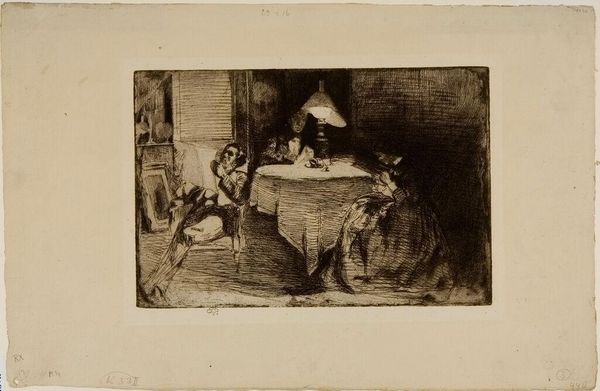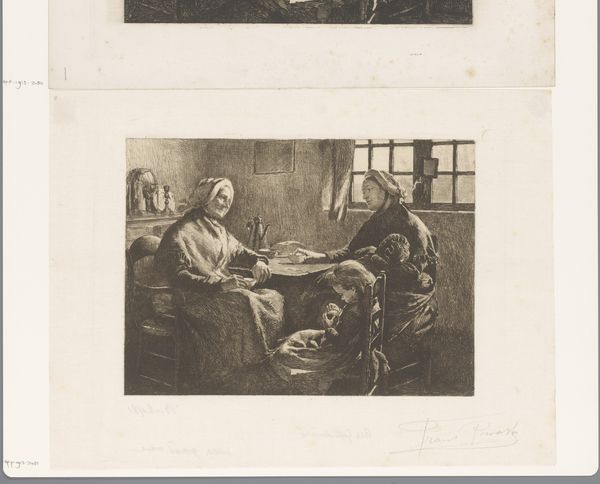
drawing, print, etching, paper
#
drawing
#
medieval
#
narrative-art
# print
#
etching
#
paper
#
genre-painting
Dimensions: 212 × 312 mm (image); 240 × 328 mm (plate); 348 × 537 mm (sheet)
Copyright: Public Domain
Alphonse Legros created this etching, "The Refectory," using a metal plate, likely copper or zinc, and acid. The plate is prepared with a waxy ground, through which the artist scratches an image. When acid is applied, it bites into the exposed metal, creating lines that hold ink. The magic of etching lies in its capacity for tonal variation. Notice how Legros uses dense, cross-hatched lines to create deep shadows, and sparse, delicate lines to suggest light. This range gives the scene its somber mood, depicting monks in a sparse dining hall. The etched line itself has a unique character. It’s not as precise as an engraving, possessing a kind of fuzzy softness that contributes to the image’s contemplative feel. Legros was deeply interested in the lives of ordinary people, and printmaking was a way to make his art accessible. Etchings could be produced in multiples, making them more affordable than unique works. In this way, Legros democratized his artistic vision, bringing it to a wider audience. In the end, close attention to materials and methods reveals much about the artist's intention.
Comments
No comments
Be the first to comment and join the conversation on the ultimate creative platform.
